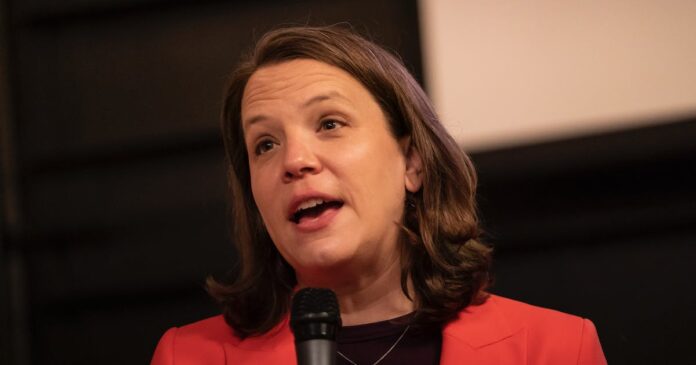To a standing ovation of environmental advocates, the Minneapolis City Council on Thursday unanimously approved a plan to address the climate crisis by slashing the city’s pollution and reach net-zero emissions by 2050.
The plan, expected to be signed by Mayor Jacob Frey in coming days, calls for more energy-efficient homes and buildings, fewer gas vehicles on the roads, less waste rotting in landfills, and more trees — all with an eye on racial and environmental justice, a theme woven throughout the green roadmap.
“It’s ambitious and very much in line with what the science says needs to happen,” said Kate Knuth, the Minnesota Pollution Control Agency’s new climate director who served on the plan’s steering committee.
The Climate Equity Plan, packed into a 96-page document, replaces the city’s previous climate plan from 2013, setting goals — and sometimes charting clear paths — to achieve them. Many of those goals will be funded by an increase in city fees on electricity and natural gas, as well as state and federal funding sources.
As Minnesota’s largest city, Minneapolis’ climate approach could have ramifications for the environment, commerce and health standards across the state.
Here are five key goals and how the city hopes to achieve them, based on research and interviews:
Greener homes and big buildings
Goals: Insulate 40,000 homes by 2040; cut the greenhouse emissions of big buildings by 75% (from 2006 levels) by 2030; swap out gas appliances for electric.
Impact: A lot of greenhouse gasses are produced because Minneapolis’ aging, drafty buildings are inefficient. Natural gas — called “fossil gas” in the report — is used to heat most buildings and is the city’s biggest source of greenhouse gases, followed by electricity use and on-road transportation.
Where we are now: More than half the city’s roughly 88,000 1- to 4-unit homes have inadequate attic insulation, and about a third last year had inadequate wall insulation. Greenhouse gas emissions from big buildings have have already fallen to 35% of 2006 levels, so the city is more than halfway there.
How we get there: Making all houses, duplexes and other 1- to 4-unit dwellings in the city climate-friendly will cost at least $1 billion, according to a report this year by local nonprofit Center for Energy and Environment. Knowing this, the city’s short-term goal is to weatherize and insulate 5,000 homes by 2030. As for the city’s large commercial, industrial and apartment buildings, the new report says “massive increases in energy efficiency and building electrification” will be needed.
Electric vehicles
Goals: Twenty-five percent of all cars registered in Minneapolis to be electric by 2030; three of five trips to be taken in the city by foot, bicycle or transit by 2030.
Impact: Transportation, which accounted for 24% of the city’s emissions in 2020, not only warms the planet but creates smog that can exacerbate health issues, especially in disadvantaged communities near freeways and industrial areas.
Where we are now: About 3% of vehicles in the city are electric. Mass transit ridership remains well below pre-pandemic levels.
How we get there: The city hopes to speed adoption of election vehicles by increasing charging stations in the public right-of-way, creating charging areas for apartment dwellers, and expanding access to electric rideshare vehicles. The goal is to make all-electric buses, scooters, e-bikes and ridesharing available within a 10-minute walk everywhere in the city.
Renewable electricity
Goal: Every watt of electricity within the city limits will come from a renewable source by 2030.
Impact: This is a big one. Power generation from coal and natural gas is a major driver of climate change and makes up the second-largest chunk of the city’s carbon use, behind natural gas.
Where we are now: Minneapolis’ reliance on carbon-producing electricity has fallen steeply in recent years and will continue, according to projections. That’s largely the result of Xcel Energy phasing out fossil fuel power plants. But there’s a catch: While Xcel is on a path to be carbon-free by 2040, as required by a new state law, Minneapolis aims to be fully renewable by then. The difference? Nuclear power is carbon-free, but it’s not renewable.
How we get there: Solar power generated within the city limits will be key to bridging the gap. Exactly how many panels are needed isn’t yet clear, but planners believe a combination of rooftop arrays and community solar gardens will have to be erected.
Slash trash
Goals: Recycle and compost 80% of citywide waste by 2030; flatline growth in total waste (from 2010 levels) by 2030.
Impact: Garbage is a relatively small portion of the city’s carbon footprint, generally between 1% and 2% over the last decade. But waste is still wasteful.
Where are we now: Minneapolis currently recycles and composts about 50% of its waste stream. The pandemic wasn’t helpful and actually boosted the amount of stuff that we toss. Think Amazon packaging.
How we get there: The city hopes to expand recycling by ensuring commercial and industrial buildings have recycling services; many still don’t. Officials might consider requiring landlords and building owners to sign up for recycling. Signing up more people for the city’s curbside composting program would move the needle.
Green spaces
Goal: Expand and improve public and private green spaces.
Impact: Well-placed rain gardens can temper flash floods and tree canopies can lower temperatures, reducing the effects of the urban heat island.
Where we are now: Enormous swaths of the city are functionally impervious, meaning they’re vulnerable to flash flooding.
How we get there: The plan calls for planting of 200,000 new trees in the city by 2030. Devoting more land to urban farming and promoting pollinator-friendly landscapes is also in the mix, as is using more biochar — a form of charcoal — in green spaces to sequester carbon.
Staff writer Jennifer Bjorhus contributed to this story.



